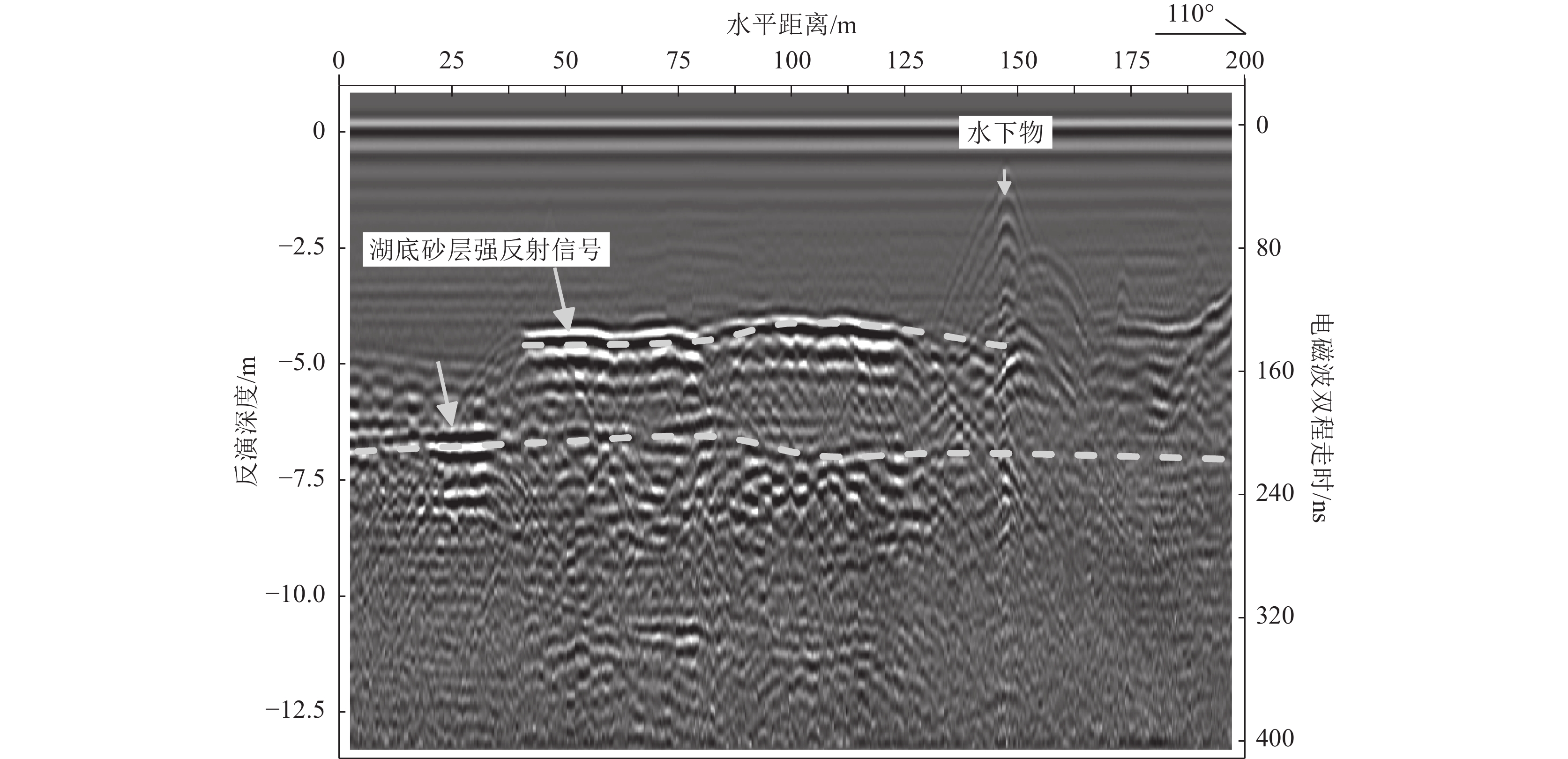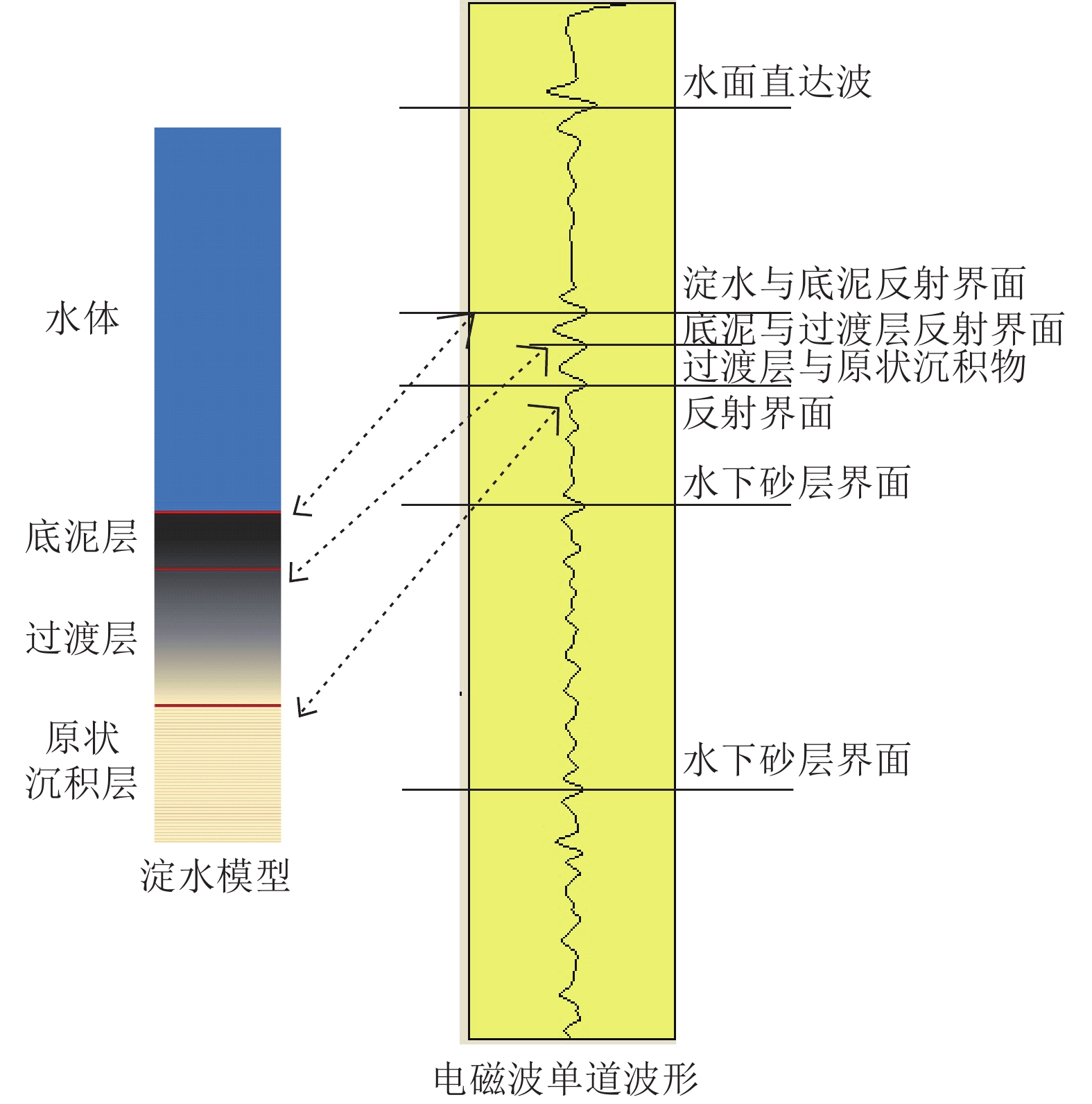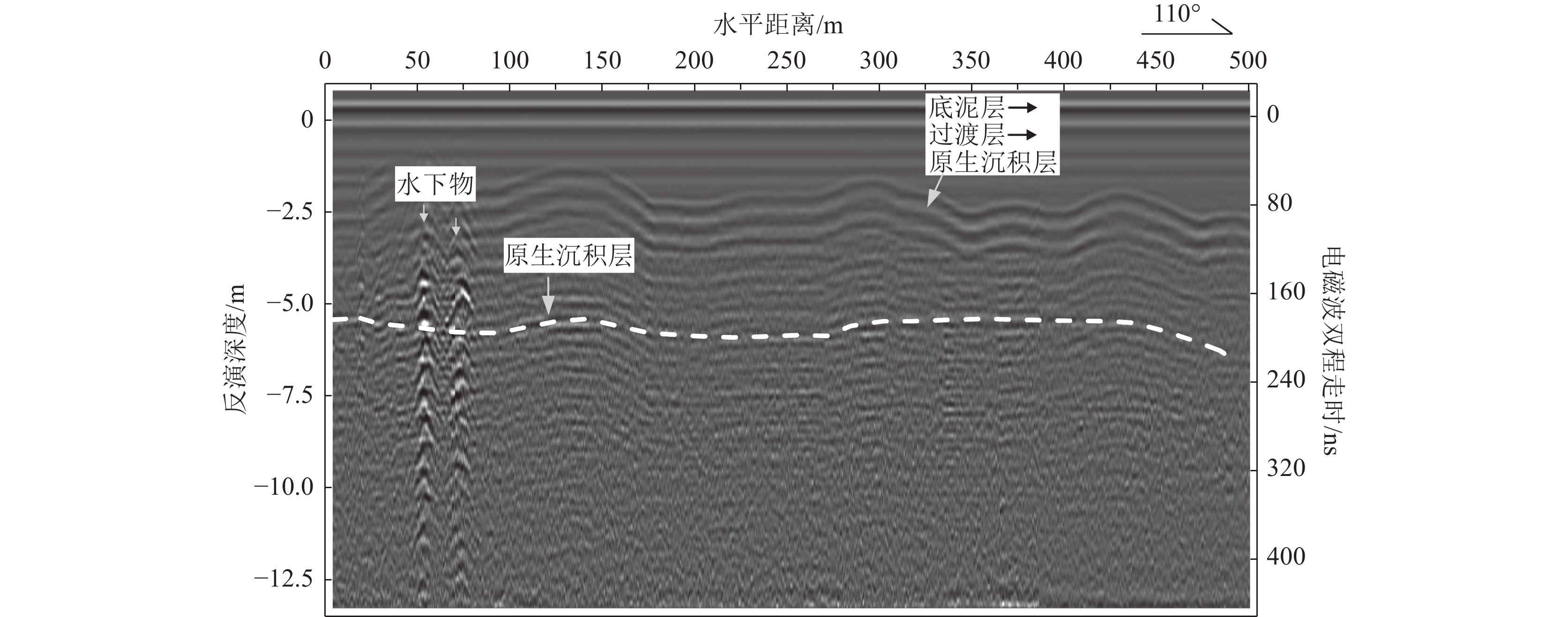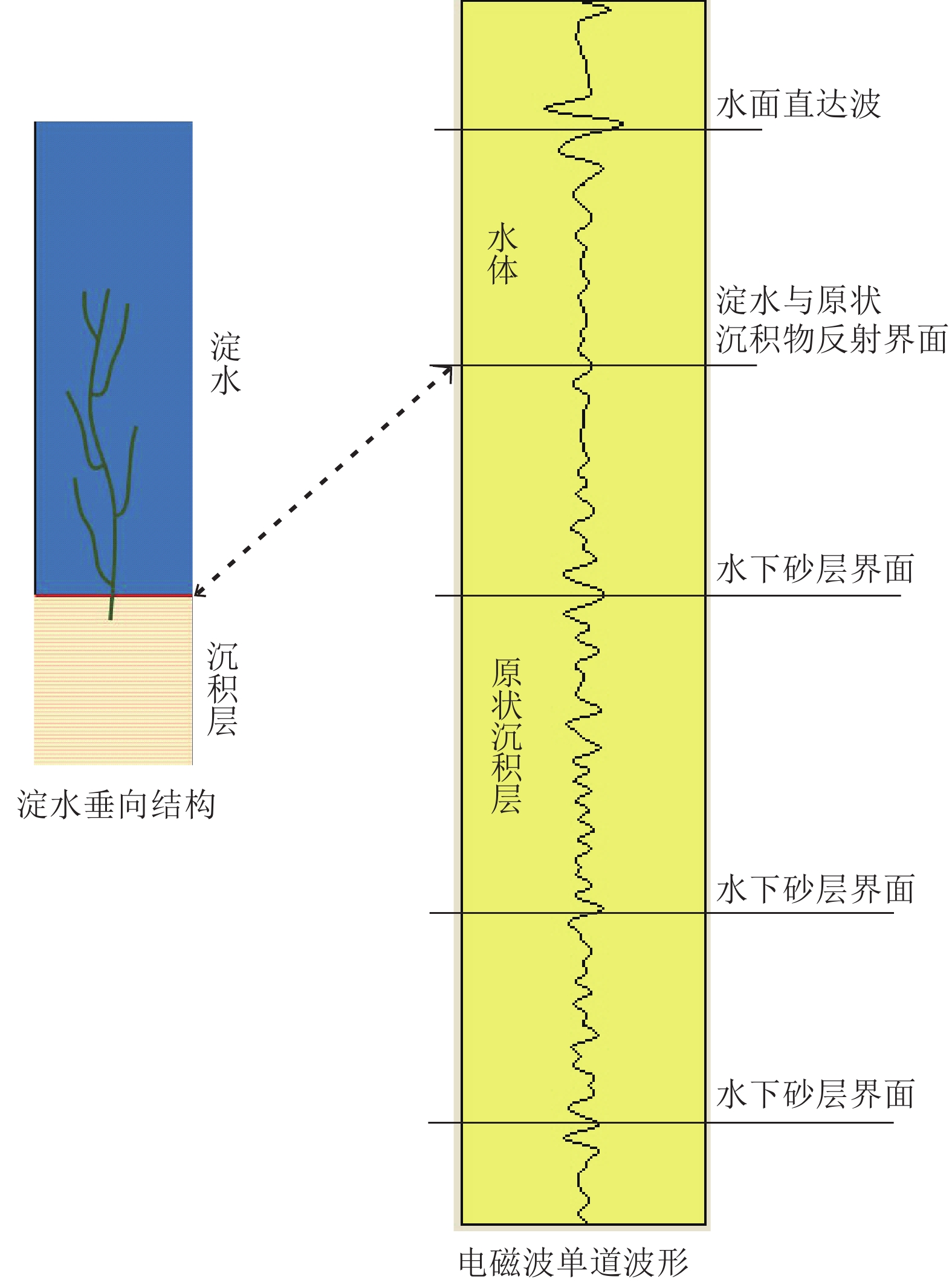Technical breakthrough and practice of ground penetrating radar in the exploration of Baiyangdian lake bottom stratum structure
-
摘要:
白洋淀湖底地层调查对于白洋淀生态地质调查、湖底生态清淤及湿地生态保护具有非常重要的现实意义。为系统探明白洋淀湖底地层结构,从区域尺度对湖底地层实现完整刻画,为钻探调查提供精确的靶区数据支撑,创新了探地雷达应用范围,采用船载方式,透过水体开展了湖底地层勘查。剖析白洋淀湖底结构探地雷达勘探技术难点,分析了含底泥和不含底泥2种情形下水上勘探电磁波的传播特征和湖底原生地层的地球物理响应条件,建立了淀水+淤泥层+湖底原生地层的湖底简化结构模型。通过对比国内外主流探地雷达系统不同硬件设备的勘探能力与适应条件,优选出双皮划艇搭载50 MHz低频组合天线的工作模式,结合适用于水下电磁波弱信号提取的数据处理技术,获得了白洋淀湖底15 m深度范围的地层结构数据。结果表明,此种工作模式适用于湖区水深小于5 m的水域,原生地层电磁波整体呈现弱反射特征,湖底15 m深度范围内存在2~3组砂层反射界面。淤泥层会大大削弱湖底原生地层的电磁波反射强度。存在厚砂层的水域,电磁波会形成强反射波组,砂层展布形态刻画清晰,砂层厚度变化在0~3 m之间。本项研究实现了湖底地层结构建模分析、天线勘探模式优选、数据处理过程优化等技术集成。该技术成果为白洋淀淀区地下水与地表水三维地质建模提供了基础依据,为湖底地层钻探勘查提供了靶区支撑,有力推动了白洋淀湿地水-陆一体化探测技术方法体系的构建。
Abstract:The investigation of the Baiyangdian lake bottom strata holds significant practical importance for the ecological geological survey, ecological silt removal, and wetland ecological protection of Baiyangdian. In order to systematically identify the stratigraphic structure of Baiyangdian lake at a regional scale and provide accurate target data support for drilling investigations, this paper introduces an innovative application range of ground penetrating radar (GPR) and conducts a ship-based stratigraphic survey through the water body. This study analyzes the technical challenges associated with exploring the lake bottom structure using GPR. It examines the characteristics of electromagnetic wave propagation and geophysical response conditions in two scenarios: with sediment and without sediment. A simplified model is established, consisting of diaster-water + silt layer + lake bottom primary formation. By comparing the exploration capability and adaptation conditions of different hardware equipment of mainstream ground penetrating radar systems at home and abroad, this paper optimizes the working mode by employing double kayaks equipped with a 50 MHz low-frequency combined antenna. Additionally, it combines suitable data processing technology for extracting weak signals from underwater electromagnetic waves. As a result, stratigraphic structure data at a depth of 15m are obtained for Baiyangdian lake. The findings indicate that this model is applicable to areas within the lake where water depth is less than 5 m; here, weak reflection characteristics are observed in electromagnetic waves emitted by primary formations at the lake bottom along with 2 ~ 3 groups of sand reflection interfaces at depths up to 15 m. The presence of silt layers significantly attenuates electromagnetic wave reflection intensity originating from primary strata at the lake bottom.
-

-
表 1 白洋淀常见介质物性参数参考值
Table 1. Reference values of physical properties of common dielectrics in the deposition area
介质名称 相对介电常数(无量纲) 电磁波速度/(mm·ns−1) 电阻率/(Ω·m) 空气 1 300 ∞ 水 81 33 30 ~ 10000 耕种土 2.6 ~ 15 77 5 ~ 20 干砂 3 ~ 6 120 ~ 170 20 ~ 200 湿砂 25 ~ 30 55 ~ 60 15 ~ 50 粉质粘土 8 ~ 12 60 8 ~ 25 粘土 8 ~ 12 60 5 ~ 20 表 2 探地雷达水陆探测勘探能力对比结果
Table 2. Comparison of land and water detection capabilities of GPR
勘探方式 中心频率/MHz 模糊区 测程/ns 测深/m 垂直分辨率 地面探测(Er=9) 300 25 cm 150 ~ 300 2 ~ 3 15 cm 100 50 cm 300 ~ 500 20 40 cm 50 1 m 800 40 0.5~2 m 水上探测(Er=40) 300(沉水雷达) 水体,非勘探目标 150 ~ 300 2 20 cm 100 300 ~ 500 5 40~50 cm 50 800 15 0.5~2 m -
[1] Ardekani M, Druyts P, Lambot S. 2014. Recovering the structure of a layered soil, including layer thickness and dielectric permittivity, using theinterfaces and objects backscatter detected in GPR b−scans[C]//Proceedings of the 15th International Conference on Ground Penetrating Radar (GPR 2014), Brussels: 397–400.
[2] Baek S, Kim S, Known J, et al. 2017. Ground penetrating radar for facture mapping in underground hazardous waste disposal sites: a case study from an underground research tunnel, South Korea[J]. Appl. Geophys., 141: 24−33. doi: 10.1016/j.jappgeo.2017.03.017
[3] De Coster A, L Pérez J, Medina M. 2019. Towards an improvement of GPR−based detection of pipes and leaksin water distribution networks[J]. Journal of Applied Geophysics, 162: 138−151. doi: 10.1016/j.jappgeo.2019.02.001
[4] Filippo B, Lukas K, Bjørn K M, et al. 2023. Mapping inland water bathymetry with Ground Penetrating Radar (GPR) on board Unmanned Aerial Systems (UASs)[J]. Journal of Hydrology, 616: 128789.
[5] Goodman D. 1994. Ground−penetrating radar simulation in engineering and archaeology[J]. Geophysics, 59(2): 224−232. doi: 10.1190/1.1443584
[6] Johnston B, Ruffell A, McKinley J, et al. 2018. Detecting voids within a historical building facade: a comparative study of three high frequency GPR antenna[J]. Cult. Herit., 32: 117–123.
[7] Kämäri M, Alho P, Colpaert A, et al. 2017. Spatial variation of river−ice thickness in a meandering river[J]. Cold Reg. Sci. Technol., 137: 17–29.
[8] Lambot S, André F. 2014. Full−wave modeling of near−field radar data for planar layered media reconstruction[J]. IEEE Trans. Geosci. Remote Sens., 52 (5): 2295–2303.
[9] Maas C, Schmalzl J. 2013. Using pattern recognition to automatically localize reflection hyperbolas in data from ground penetrating radar[J]. Computers & Geosciences, 58(2): 116−125.
[10] Ruffell A, Parker R. 2021. Water penetrating radar[J]. Journal of Hydrology Journal of Hydrology, 597: 1−13.
[11] Topp G C, Davis J L, Annna A P. 1980. Electromagnetic determination of soil water content: measurement in coaxial transmission lines[J]. Water Resource Research, 16(3): 574−582. doi: 10.1029/WR016i003p00574
[12] 蔡少峰. 2019. 探地雷达在河流水下地形及基岩探测中的试验研究[J]. 工程地球物理学报, 16(5): 680−685.
[13] 丁 凯, 查恩来, 周紧东, 等. 2005. 应用地质雷达进行水下抛石探测的试验研究[J]. 水利学报, 12(增刊): 560−565.
[14] 郭秀军, 王淼, 孙振水, 等. 2009. 基于探地雷达技术的水下淤泥层高分辨率探测研究[C]//山东省地球物理六十年学术交流会. 青岛: 中国海洋大学: 639−647.
[15] 欧阳, 张杰, 冯杰, 等. 2022. 地质-地球物理三维可视化建模及其应用——以雄安新区为例[J]. 华东地质, 43(3): 286−296.
[16] 王复明, 尚向阳, 钟燕辉. 2008. 探地雷达在河流水深探测中的应用研究[J]. 人民黄河, 30(4): 17−18.
[17] 王凯. 2022. 基于综合地球物理探测的雄安新区地热地质结构及深部热源机制研究[D]. 吉林大学博士学位论文.
[18] 袁国礼, 侯红星, 刘建宇, 等. 2023. 服务生态文明的生态地质调查工作方法浅析[J]. 西北地质, 56(3): 30−38. doi: 10.12401/j.nwg.2023065
[19] 赵永辉. 2019. 探地雷达在水下考古中的机遇与挑战[J]. 中国港口, S1: 125−133.
[20] 张杰, 杨毅, 王凯, 等. 2022. 综合地球物理在雄安新区三维地质结构探测中的应用与成果[J]. 物探化探计算技术, 44(6): 742−750.
[21] 张开伟, 吴园平, 王世淼, 等. 2019. 基于探地雷达技术的水下沉积地形探测应用研究[J]. 人民长江, 50(7): 117−122.
[22] 中共河北省委、河北省人民政府编制. 2018. 《河北雄安新区规划纲要》[R].
-



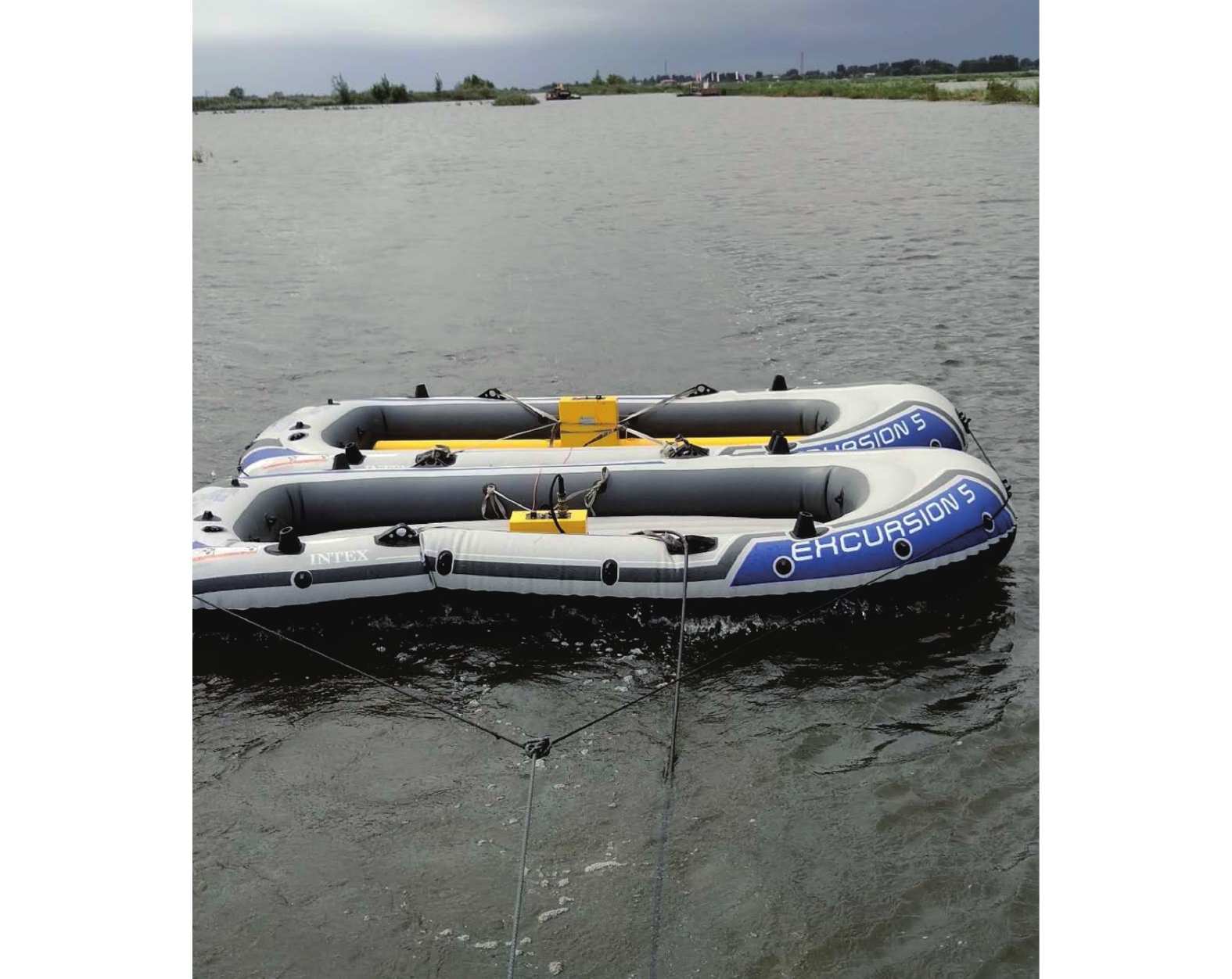
 下载:
下载:
